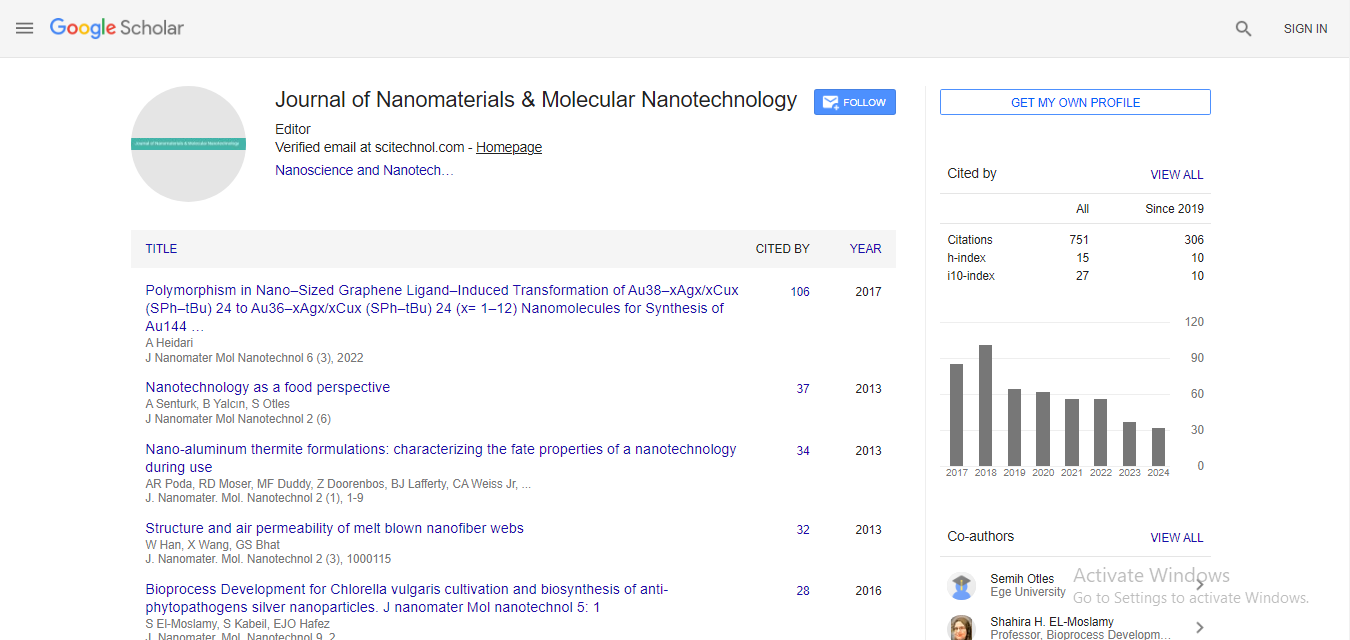Ultra-fast atmospheric plasma reduction-exfoliation of highly porous aerogel-like graphene oxide
Richard Krumpolec,* Frantisek Zelenak and Mirko Cernak
CEPLANT MUNI, Czech Republic
: J Nanomater Mol Nanotechnol
Abstract
Additive-free 3D reduced graphene oxide (rGO) aerogels are promising candidates for energy storage, fuel cells, photocatalysis, sensing and medical applications etc. The simplest way to prepare the graphenelike rGO is to reduce low-cost GO. However, the complicated ‘reduction–exfoliation’ of GO become a major bottleneck that restricts the large-scale production of rGO. We will present simple, fast, low-cost and chemicalfree fabrication of rGO aerogel 3D cakes using an electrical plasma-triggered reduction-exfoliation of highly porous GO aerogel-like materials starting at temperatures not higher than 100 oC. For plasma triggered reduction-exfoliation of GO we prepared a 3D sample (called cake, see Figure 1) of highly porous aerogel-like graphene oxide. A 5 cm diameter and 1 cm in thickness GO aerogel cake of brown color shown in Figure 1 was fabricated under mild conditions from an aqueous solution of graphene oxide (GO flakes size < 150 μm) by drying in a vacuum oven (modified lyophilization method). The 3D GO cake was exposed to low-temperature plasma generated by atmospheric Diffuse Coplanar Surface Dielectric Barrier Discharge (DCSBD) plasma source in technical nitrogen. The plasma triggered the self-propagating reduction-exfoliation modification of GO into black rGO (Figure 1). The rGO 3D aerogel-like cake retained its original shape without abrupt disintegration. Subsequently, the 3D rGO cake was hydraulic pressed into thin 60 μm sheet and examined using XPS, SEM, and Raman spectroscopy. We observed an approximately 105 fold decrease of the rGO sheet resistivity compared to unmodified GO sheet. The rGO sheet exhibited sheet resistance 257 Ω.â?¡-1 (sheet conductivity 225 S.m-1) as measured and analyzed by four-point probe method. The novel plasma-triggered reductionexfoliation method opens new opportunities for low-cost industrial-scale production of conductive rGO sheets and rGO-based composites for various modern industrial applications.
 Spanish
Spanish  Chinese
Chinese  Russian
Russian  German
German  French
French  Japanese
Japanese  Portuguese
Portuguese  Hindi
Hindi 



